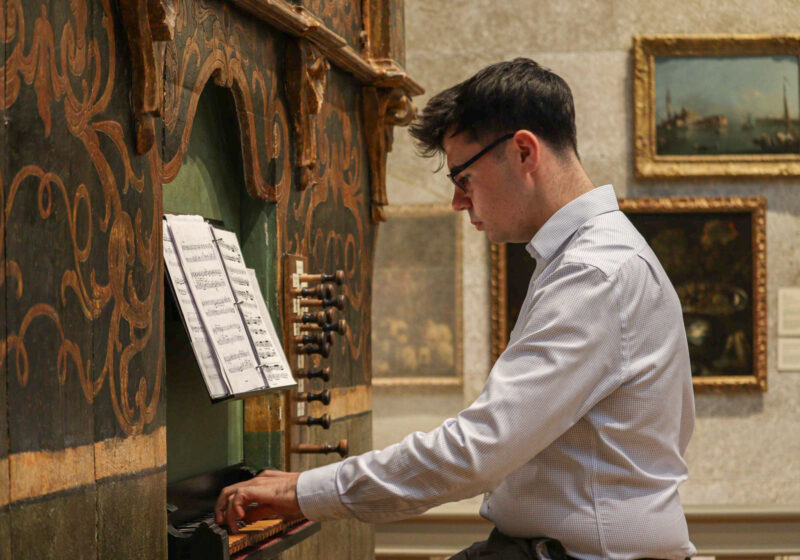Technology and history converged last Tuesday as pianist Tony Caramia presented an entertaining and historical presentation on the music of Billy Mayerl.
The added information ? the background on both the pieces and the composer ? served to pique the interest of the diverse audience, which Caramia never seems to have trouble attracting. The activities were well-paced, with playing and speaking interspersed. Each point Caramia articulated verbally was explored on the keyboard.
At one point, Caramia illustrated various technical attributes of the pieces on the large projector screen. As the words “left-hand figurations” appeared on the screen, Caramia played corresponding excerpts from various Mayerl pieces that contained the figurations that Mayerl had originally intended. The same occurred with Mayerl’s use of the whole-tone scale, pentatonic scale, “hummable tunes” in his melodies and non-syncopated pieces.
This format greatly increased the ability of the audience to hear specific innovations of the composer. The use of the screen allowed the audience to immediately hear the compositional effects being highlighted, allowing the audience to further appreciate the music.
Mayerl was a British pianist that wrote syncopated music from the 1920s to the 1950s. His specialty was solo piano music, his most famous piece being the piece entitled “Marigold.” As Caramia explained, this piece, written in 1927, became Mayerl’s “bread, his butter and his jam.”
“Marigold” is a piece written for solo piano in a syncopated style which succeeded ragtime and was played at the same time as early jazz. Although it became the piece that typified the Mayerl sound for most audiences at the time, Caramia illustrated that Mayerl was in fact an incredibly diverse composer. As previously mentioned, some of his pieces made use of modes besides the standard major or minor tonalities.
The “hummable tunes” which were contained within the melodies of Mayerl’s piano music revealed a composer that was capable of writing memorable melodic lines. Mayerl used this ability in the songs that he wrote, which were similar to the songs of George Gershwin, written at around the same time.
Mayerl had the ability to capture a completely different mood in each of his pieces. His creativity also included the titles of his songs, and to make that past come alive today.
In order to fully illustrate Mayerl’s diversity, Caramia’s program included some non-syncopated piano music, a piece written for violin and piano and two popular songs.
Professor of Violin Charles Castleman joined Caramia on the stage for the performance of “Caprinella,” which was written in 1951. The piece was played with flare and the dynamic between the two was absolutely charming. After the pair had played their last notes, there was a brief moment before the applause in which the audience collectively sighed “Oh!”
Misty Castleberry-Sturm, a second-year Masters student in vocal performance, joined Caramia on “There’s a Star in the Sky” and “These Precious Things.” The pieces had beautifully written melodies and lyrics that were hopeful and bright. Caramia and Castleberry-Sturm’s interpretation of the pieces rendered true the statement that was often made of Billy Mayerl’s work ? “his music seemed to smile.”
Caramia revealed his passion for this music in the way he seemed to effortlessly secure the unique essence of each piece. Whether capturing the motion contained in the train-like sounds of “Railroad Rhythm,” portraying the attempts of an imprisoned creature to escape his transparent cage in “Beetle in a Bottle” or painting the beautiful serenity of a balmy day in “Shallow Waters,” Caramia transported his audience to different worlds.
Mayerl was known as “The Nimble-Fingered Gentleman.” There were two such spirits in the house that night.
Kohrs can be reached at skohrs@campustimes.org.





